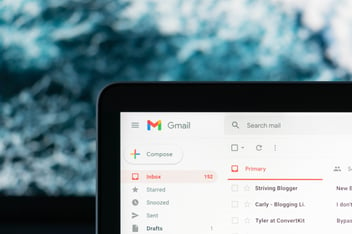10 Low-Cost, Ninja Customer Engagement Tactics
Is it possible we're overthinking customer engagement and loyalty?
A quick glance around at some of the commentary in the industry hits on some deep concepts. They're breaking down how brands can subconsciously appeal to consumers using psychological marketing. They're telling brands to dive into omnichannel data mining to create mobile experiences and branded content that address all the different stages of the lifetime consumer engagement cycle.
It all sounds great, if a little intimidating.
But could it also be overkill?
We don't think a great customer engagement effort needs to cost a ton of money. Sure, a big budget doesn't hurt, but no one should allow a lack of resources to prevent them from building better customer relationships.We also think it doesn't take a lot of effort. A handful of smart engagement efforts is often better than a full-scale engagement blitzkrieg.
Customer engagement ninjas know how to keep their brands in front of customers without being pushy, and without overcomplicating things. They're targeted, subtle, and efficient.
Check out this list of 10 ninja customer engagement tactics that any company can pull off
These aren't intended to be major initiatives that require expensive technology or oodles of data.
No, these are low-key, low-cost, customer-centric techniques any business can use. The goal? Earning just a bit more trust from a customer, with the ultimate goal being they'll turn to you first the next time they need services or products like yours.
-
The Social Media Follow Back
Somewhere along social media's yellow brick road someone decided it was cool to have a high follower/following ratio. So people and brands sort of stopped following people. That's their choice, but engagement is all about making connections and building trust. Give your customers a little ego boost by following them back.
Then, take it a step further and say hello, or respond to their content on occasion. Not with a sales pitch, just a little line to let them know you're still there.
-
Invite a Response to Everything, Everywhere
Delete that "noreply@yourcompany.com" email address right now. Put the word out that you're not just open for business, you're open for feedback. Invite people to respond, to tweet you, to DM you, to call, or text, or however they want to talk.
The point is to make your brand available where and when people need it. Sure, it's probably more efficient to simply funnel everyone through a call center. That's also an efficient way to look and act like every other company out there. Be different, and watch how people respond.
-
Report Back
Now that you've opened the doors for opinions and feedback, do something with it. Then, when you've done something with it, report back to the person or people who made the original suggestion.
They already felt invested enough in your brand to suggest how you can improve it. Now, they'll feel like partners, because they know their voice counts.
-
Create Experts
The quickest route to loyalty comes from personalization. People integrate your brand into their regular routines, or find a way for you to serve an invaluable role in their lives. The challenge here is this rarely happens straight out of the box. You have to make your customers as smart as you are about your product or service.
Invest in constant education about your product. Show them how others are using it. Eventually your customers will feel as much ownership of it as you do.
-
Beta Program
Speaking of experts, reward yours (and work out some bugs in your product or service) by giving them early access to new products and releases.
This is a way of knocking out several birds with one stone: you iron out kinks with your product, stroke egos, increase dialog with your most engaged customers, and generate buzz around your community for what's coming next (as your most engaged customers will want to talk about the updates and their *insider* status).
-
Surprise and Delight
When your ideal customer waltzes in the door or makes an initial purchase, don't just let them have the same experience as everyone else. Drop them a little something - a free item, an extra month to their subscription, a handwritten note. Your cost will be minimal, but they'll feel special, and to be honest, obligated to repay the favor.
Regardless, everyone likes to be singled out for gifts, and remember: this is about earning a second and third look, the next few chances to secure their business.
-
Custom Content
The technology exists to allow you to customize just about anything.
For example: I registered for a marathon recently, but didn't complete the process. A week later, the marathon sent me a video with my name in lights at the finish line, my name on a racing bib on an active runner, and a call to action inviting me to finish the deal.
That's a nice example, but you don't have to go that far. A simple example of this would be a retail operation with a black book of favored customers, with a note on their recent purchases, and each of those people receiving a call or text before a big sale, or when something they'd like comes in.
Or even the most basic example: training your employees to remember first names.
-
Ask for a Favor
One of our favorite little hacks, based on an old Ben Franklin principle: would you do a favor for someone you didn't like? Of course not.
Ask your customers to help you out. It could be the aforementioned beta program, or a less formal request for feedback. It might be a survey, or if you're bold, a referral. The "what" probably isn't as important as just getting them to do a small favor for you.
This alone isn't going to change the game, but in the world of engagement all the small things add up.
-
Gather Them Together
Another way to build engagement is to connect customers to each other. It can be in-person, at special events. Or, you can do it easily online. This community-building serves many purposes: creating experts, connecting regular customers to your most engaged ones (your superusers), a chance to monitor and respond to issues, a forum to promote new offerings, and an arena to solicit new ideas.
Online communities don't necessarily have to be branded for your organization. Your customers may already be gathering somewhere, such as Reddit or a topical forum. Your goal with these is to be an authentic member. Not just a salesperson or apologist, but someone who is part of the community that is also an official representative of the brand.
-
Onboard Them Straight into Success
Every business has an onboarding process, whether you know it or not. It's what happens immediately after a consumer becomes a customer.
They bought; what now?
This is where many customer relationships are solidified or broken. It's important that you guide them down the path to the best possible experience.
If you're Twitter, you get people to follow interesting accounts.
If you sell running shoes, it might be a video tutorial on how to break them in or signing them up for a group run.
If you run a plumbing business, it might be getting them to subscribe to your YouTube channel so they can fix a basic leak (and understand that you know your business).
If you manage a Mexican restaurant, bring out a small sample of your best moles for people to try while they're deciding what to order.
If you run a marketing agency, it might be knocking out that initial strategy session and walking them through some initial campaign mockups.
Somewhere within every business is the optimal experience. Whatever it is, get new customers there as soon as you possibly can.
 Small Pieces that Equal Loyalty
Small Pieces that Equal Loyalty
Ninjas operate in the shadows and do their best work out of the public eye. Similarly, the most beloved brands take strategic approaches that fit their goals and budgets. Sometimes this results in a multi-million dollar loyalty program. Other times, it's working on the little things, like employees who remember first names, or intelligent onboarding.
The key is sustaining the relationship. It's all about maintaining positive, relevant touchpoints between one purchase and another. These small interactions are the foundation of customer engagement.
None of these ten ninja techniques on their own is probably enough to build a robust base of engaged, loyal customers. But put a few of them together, combined with a solid product or service experience, and you'll capture the attention (and eventually, the hearts) of a lot more customers than you would otherwise.
(image courtesy of Andrés Álvarez Iglesias)
Topics: Customer Engagement
Written by: Brandon Carter





 Small Pieces that Equal Loyalty
Small Pieces that Equal Loyalty


.jpeg)







Share your Comment.